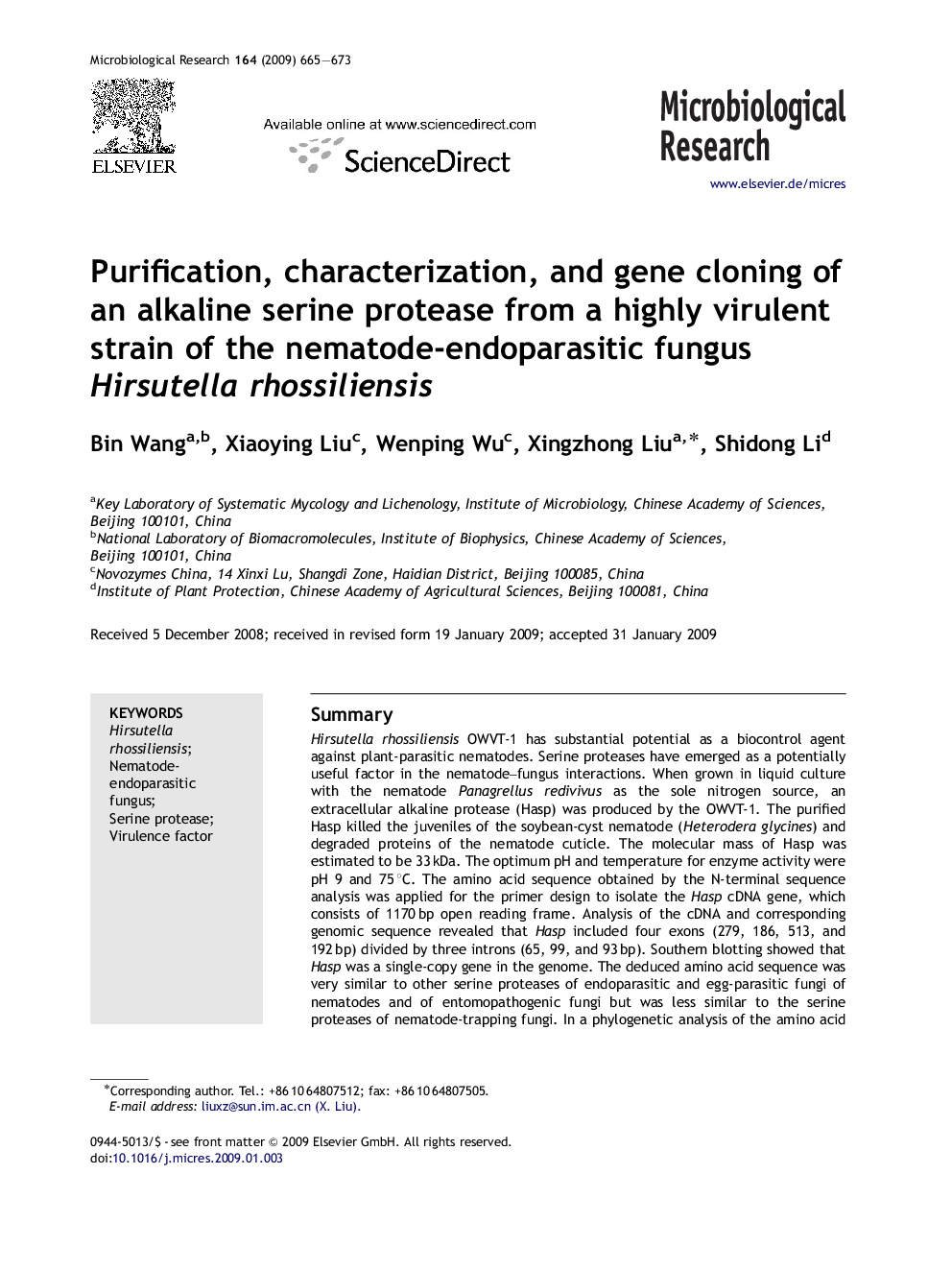| Article ID | Journal | Published Year | Pages | File Type |
|---|---|---|---|---|
| 2092881 | Microbiological Research | 2009 | 9 Pages |
SummaryHirsutella rhossiliensis OWVT-1 has substantial potential as a biocontrol agent against plant-parasitic nematodes. Serine proteases have emerged as a potentially useful factor in the nematode–fungus interactions. When grown in liquid culture with the nematode Panagrellus redivivus as the sole nitrogen source, an extracellular alkaline protease (Hasp) was produced by the OWVT-1. The purified Hasp killed the juveniles of the soybean-cyst nematode (Heterodera glycines) and degraded proteins of the nematode cuticle. The molecular mass of Hasp was estimated to be 33 kDa. The optimum pH and temperature for enzyme activity were pH 9 and 75 °C. The amino acid sequence obtained by the N-terminal sequence analysis was applied for the primer design to isolate the Hasp cDNA gene, which consists of 1170 bp open reading frame. Analysis of the cDNA and corresponding genomic sequence revealed that Hasp included four exons (279, 186, 513, and 192 bp) divided by three introns (65, 99, and 93 bp). Southern blotting showed that Hasp was a single-copy gene in the genome. The deduced amino acid sequence was very similar to other serine proteases of endoparasitic and egg-parasitic fungi of nematodes and of entomopathogenic fungi but was less similar to the serine proteases of nematode-trapping fungi. In a phylogenetic analysis of the amino acid sequences of serine proteases, the serine protease of H. rhossiliensis OWVT-1 clustered with the serine proteases of parasites of nematode eggs rather than with those of the trapping fungi.
